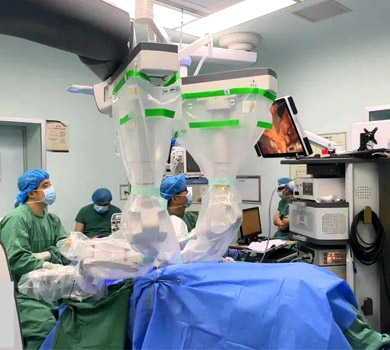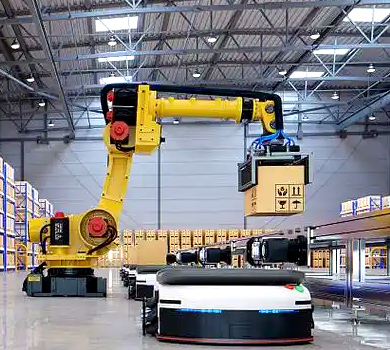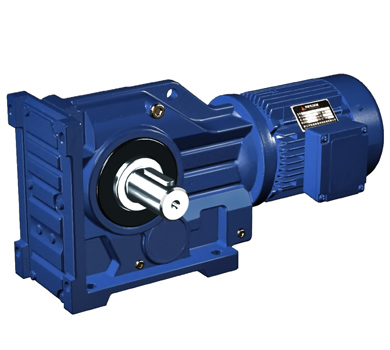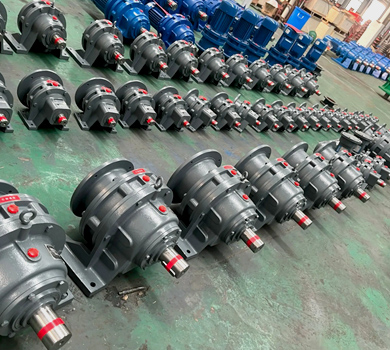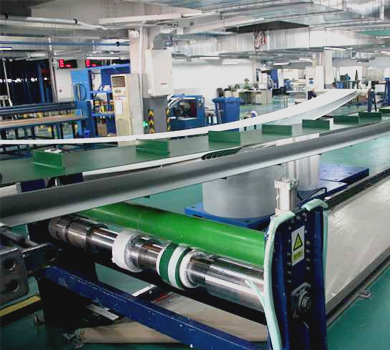Industry Pain Points
Precision painting robots face the following challenges in industrial automation processes:
- Inconsistent spray paths causing uneven coating thickness
- Performance degradation at high temperatures affecting stability
- Space constraints making standard reducer installation difficult
- High backlash under frequent start-stop and high-speed motion affecting repeatability
- Low protection rating leading to internal contamination from paint dust
- Inadequate load capacity or fluctuating output torque affecting painting quality
Industry Requirements
To address these pain points, painting robots have the following six key requirements for core transmission components—reducers:
- High precision: Backlash ≤1 arcmin for consistent path tracking
- High rigidity: Torsional stiffness ≥500 Nm/arcmin to resist external impact
- Low error: Transmission efficiency ≥95% to reduce energy loss
- Compact structure: Outer diameter ≤80mm for tight space layouts
- Heat resistance: Operating temperature range -20°C~+120°C
- Versatile mounting options: Flange, shaft bore, hollow shaft interfaces supported
Current Industry Situation
Currently, general-purpose reducers used in painting robots suffer from poor fit, short lifespan, and frequent maintenance. Especially in high-precision applications like automotive painting and 3C electronics, customers increasingly demand customized reducers.
Customization Solution
Step 1: Clarify Customer Application Scenario
A domestic leading manufacturer of painting robots was developing a new generation of compact robotic arms for electric vehicle body painting.
Step 2: Analyze Core Technical Requirements
The customer specified the following technical parameters:
- Reduction ratio: 1:81
- Output torque: ≥250 Nm
- Dimensions: ≤Φ76×90 mm
- Material: High-strength alloy steel + wear-resistant coating
- Operating temperature: -10°C~+110°C
- Protection level: IP65
- Mounting method: Dual flange + servo motor direct connection
Step 3: Waimica Customization Implementation
- High-precision grinding process reduces backlash to ≤0.8 arcmin
- Optimized bearing configuration and housing design achieve torsional stiffness ≥600 Nm/arcmin
- High-temperature seals and special lubricant support continuous operation at 110°C
- Compact housing design keeps dimensions within Φ76×88 mm
- Dual flange mounting interface compatible with major servo motor brands
- IP65-rated protection ensures reliability in harsh workshop environments
Real-World Application Case
The customer selected Waimica's custom WM-RV-76E model reducer for their JPR-6A series 6-axis painting robot.
- Spray trajectory repeatability improved to ±0.02mm
- System stability achieved with MTBF (Mean Time Between Failures) exceeding 30,000 hours
- Maintenance interval extended beyond 12 months
- Overall equipment size reduced by 15%, suitable for more vehicle models
Critical Performance Parameter Comparison
| Parameter | Customer Requirement | Waimica Custom Product |
|---|---|---|
| Reduction Ratio | 1:81 | 1:81 |
| Output Torque | ≥250 Nm | 265 Nm |
| Dimensions | ≤Φ76×90 mm | Φ76×88 mm |
| Material | Alloy Steel | 42CrMo + Wear-Resistant Coating |
| Operating Temperature | -10°C~+110°C | -20°C~+120°C |
| Protection Level | IP65 | IP65 |
| Mounting Method | Dual Flange + Servo Direct | Custom Flange + Servo Direct |
Our Advantages
Waimica specializes in RV cycloidal reducer R&D and manufacturing, offering the following core advantages:
- Cost-effective: Prices 15%-30% lower than international brands
- Reliable quality: 100% factory testing, defect rate <0.3%
- Comprehensive service: Technical support + fast response
- Short lead time: Standard units in 4 weeks, custom units in 8–12 weeks
- Strong customization capability: Supports full customization of reduction ratio, mounting style, material, and interface
If you are looking for a high-performance reducer suitable for painting robots or other precision automation equipment, please contact us for detailed technical documentation and sample testing support.


